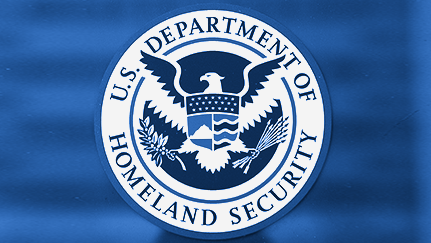U.S. immigration agencies use a range of programs to deport—or remove—certain noncitizens from the United States. Under the Trump administration, the Department of Homeland Security (DHS) and two of its component agencies, U.S. Customs and Border Protection (CBP) and U.S. Immigration and Customs Enforcement (ICE), expanded their avenues for removal. One method, the Electronic Nationality Verification (ENV) program, was touted as a way to expedite the repatriation of certain Central Americans.
There is little public information about the ENV program—only fleeting references by officials or in obscure reports. Yet since 2019, the government has used ENV to rapidly deport thousands of people. This fact sheet describes the ENV program, whom it affects, and highlights concerns regarding the program.
What is the Electronic Nationality Verification Program?
Under the ENV program, CBP coordinates with ICE’s Enforcement and Removal Operations (ERO) to “remove eligible [individuals] with a final order of removal to their native countries.” As of 2019, the agencies can remove nationals of El Salvador, Guatemala, and Honduras through ENV. It is not clear whether more countries participate as of January 2021.
A pre-existing program with Mexico—called the Interior Repatriation Initiative (IRI)—provided the framework for ENV. ICE ERO piloted IRI with Mexico in 2012 and made it a permanent initiative a year later.
The ENV and IRI programs enable DHS to quicky deport from the United States a person with final removal orders without obtaining travel documents from the foreign national’s government. Prior to ENV, if an individual arrived at the border without a valid passport from their home country, ICE was required to contact the individual’s consulate to verify their nationality, as well as to obtain formal travel documents. ICE could obtain “electronic travel documents” for nationals of El Salvador, Guatemala, Honduras, and the Dominican Republic. Under ENV, not only are travel documents produced electronically but a person’s nationality is verified electronically, sometimes through the use of biometric identifiers. In some instances, people are deported within hours of arrival.
DHS announced in 2019 that it was expanding ENV. CBP has deemed ENV a successful “migration mitigation” strategy and indicated plans to implement ENV and other strategies in full after the COVID-19 pandemic.
Who Is Impacted by the Electronic Nationality Verification Program?
The ENV program was designed to permit the fast removal of certain Central American migrants encountered at or near the U.S. border, although ENV may also facilitate the removal of those encountered inside the United States. The governments of El Salvador, Guatemala, and Honduras agreed to pilot ENV with their nationals in 2019. In a 2019 memo produced in response to a Freedom of Information Act request, DHS describes individuals as “eligible” for the program if they are (1) a national of El Salvador, Guatemala, or Honduras, and (2) have a final order of removal with “no legal impediments.”
The DHS memo states that anyone with pending “credible fear” claims—meaning people seeking asylum or another form of humanitarian relief—are not supposed to be placed in ENV. The memo lists additional considerations for people referred to the program:
- Only adults and families can be placed in ENV;
- Families “should not be separated for participation” in ENV;
- The person has no medical concerns, no imminent health concerns, or has been medically cleared for travel;
- The person has an executable final order of removal and no pending fear claims, litigation, stay of removal, or request for a stay; and
- Criminal history is not an excluding factor.
The government has provided inconsistent information on the number of people removed through the ENV program. Mark Morgan, former Acting CBP Commissioner, testified in February 2019 that 17,000 people had been removed through the program. ICE’s Fiscal Year (FY) 2021 budget justification to Congress, published in February 2020, reported an even higher number, stating that the agency repatriated 35,859 people through ENV on 360 chartered flights since the expansion of ENV on July 25, 2019. As of January 2021, no further data on ENV removals was public. In a recent annual overview of enforcement operations, ICE credited ENV for the increased deportation of families. The agency deported 14,499 family members in FY 2020, increasing removals “by 154 percent from FY 2019, primarily as a result of the Electronic Nationality Verification (ENV) Program.”
How Does the Program Work?
U.S. Border Patrol (USBP)—a component of CBP—works with the ICE ERO component to operate the ENV program. The 2019 DHS memo describes some procedures and terms for the program, but fails to provide additional details or definitions. It remains unclear whether the policies have since changed. The known process includes the following steps.
- USBP identifies detained individuals apprehended at or near the border who are eligible for ENV. Agents process and hold individuals referred to the program at a USBP location designated an ENV “Processing Spoke.”
- During processing, officers are supposed to verify eligibility, documents, and follow “consular notification procedures”—which are not specified.
- After processing, USBP arranges for transportation of the removable individuals, their property, and their “A-files” (the government’s immigration file on each person) to an ENV “Removal Hub.” The Removal Hub is a regional USBP location serving as the “transfer recipient, processing facility, and removal facility” for the ENV program.
- USBP agents at the “Removal Hub” are responsible for coordinating daily with the ERO field office to provide a list of individuals for deportation. The USBP officials are tasked with completing and verifying an I-216 form (Record of Persons and Property Transferred), along with any other removal processing documents.
- The local ERO Field Office communicates with ICE Air Operations to coordinate and schedule flights. The USBP “Removal Hub” is responsible for coordinating transportation to the flight location.
- The Processing Spoke or Removal Hub must also notify the appropriate consulate. ICE ERO is supposed to receive flight manifests including Guatemalans or Salvadorans in advance for “country clearance,” though it is not clear what that involves.
- In some instances, the Processing Spoke and Removal Hub may be located together, further expediting the process.
- ICE does not require individuals in ENV to have a full medical screening. The guidance states that “a cursory screening” will be provided for “identifiable complex medical conditions.” For “new arrivals”—individuals who have had no screening and for which there is no medical information available—the ICE “Air Flight Medical Provider” is to conduct a “visual screening” at the flight.
- ENV guidance states that families should not be separated. ICE ERO is directed to transport families together “as much as possible in order to avoid stress separation. Minors who are part of a family unit will travel with at least one parent.”
Are there Concerns About the Electronic Nationality Verification Program?
DHS describes the ENV program as one of the most “effective and lasting” pathways for removal. Yet, the government has provided next to no public information about the program. The only public mentions of this program are fleeting mentions in statements or testimonies on other topics and budget justifications.
The lack of information about a program that has resulted in thousands of removals since 2019 raises questions about due process. Other programs designed to expedite removal severely limited, or effectively barred, access to asylum for those seeking refuge at our borders. For example, shortened processes can increase the likelihood of erroneous removals and rush the complex process of individuals expressing their fear of persecution if returned to their home countries. Moreover, there is little to no information about how DHS involves consulates when placing a foreign national in ENV.
The rapid process of deportations also makes it more difficult for attorneys or advocates to access a person prior to their removal, which could increase the possibility of erroneous removals. More information is necessary to determine the effect of ENV on asylum seekers. While some portions of the DHS memo remain unredacted, it appears that there is no guidance speaking to situations where a person expresses a fear of persecution during the ENV process. This is particularly important given the well-documented failure of CBP officers to properly screen asylum seekers in all cases.
The ENV program also seems to encourage immigration agencies to prioritize the removal of eligible noncitizens from detention centers with the highest populations. The emphasis on limiting the use of detention space, rather than assessing the strength of a person’s case for relief from removal, raises further questions around due process protections and the fairness of this program. Detention space and overcrowding are serious issues, but individuals must have due process in their cases, especially when claiming fear. DHS maintains broad discretion to release individuals in its custody. The agency’s choice to use detention should not affect due process.
Going forward, DHS should provide more public information about the operation of the ENV program and similar initiatives for fast-track deportations. The government should ensure that sufficient safeguards are put in place to address these concerns.




